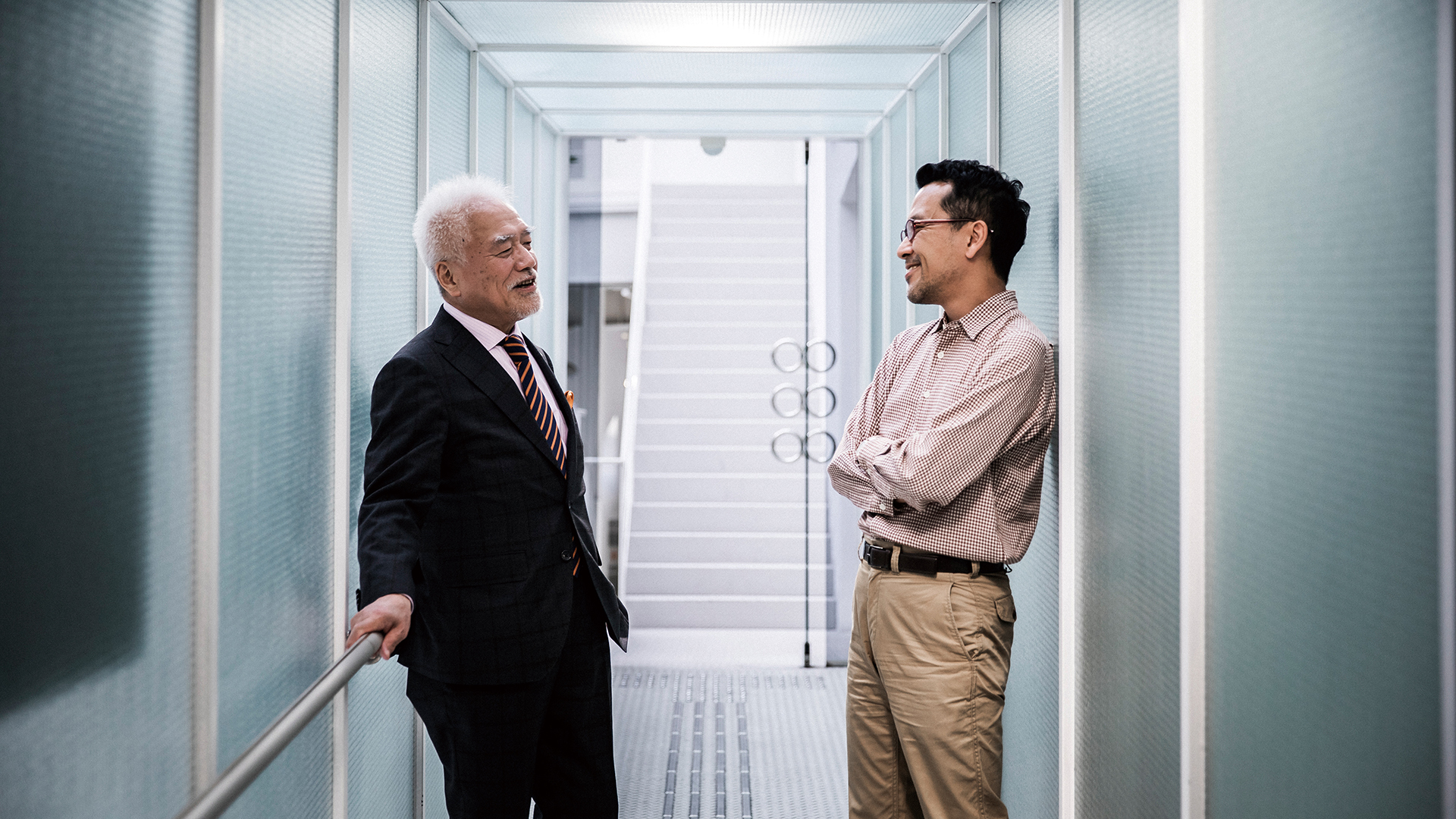
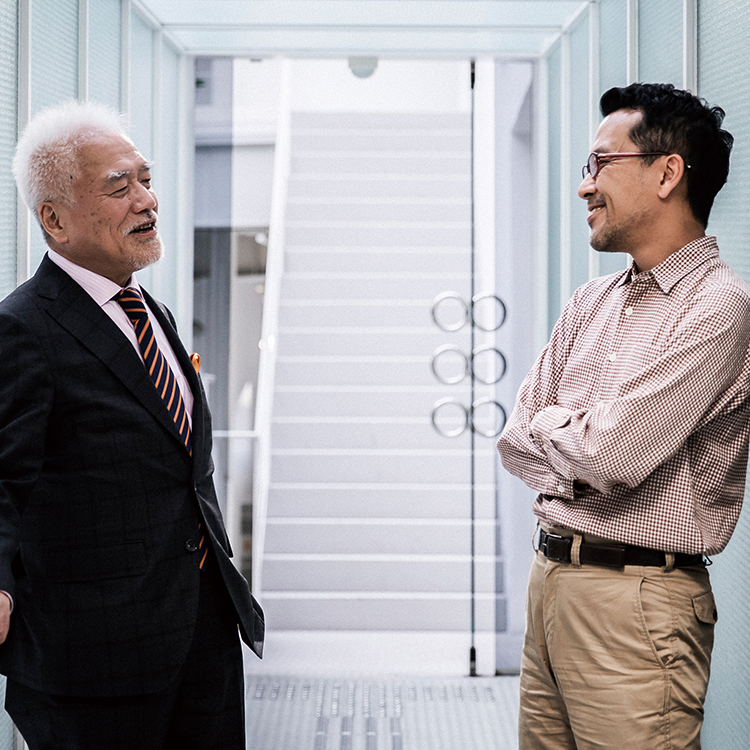


Junzo Tateno
CEO of UNION Corporation
Born in 1947, Junzo Tateno graduated from the Faculty of Law at Konan University (Kobe, Japan) in 1970
and entered Aoki Construction that same year. He joined UNION in 1973 and became CEO and President in 1990.
He serves as Chairman of the Union Foundation for Ergodesign Culture, a Public Interest Incorporated Foundation,
and the Osaka Industrial Bureau. He is also Vice Chairman of the Osaka Chamber of Commerce and Industry.
Shunsuke Kurakata
Born in 1971, Shunsuke Kurakata is an architectural historian and associate professor at Osaka City University. He has helped launch and run some of Japan’s largest architectural organizations and events, including Open House Osaka, Open Shinaken (Shinagawa-ku, Tokyo), Architectural Design Association of Nippon (ADAN), Heritage House Trust Kansai, Access Point: ARCHITECTURE-TOKYO, and Ginza Sony Park Project. He has also awarded the AIJ Prize and AIJ Education Award, among other accolades, and authored numerous work on the topic of architecture.
9
TATENO
That time in Milano, how long ago was that now?
KURAKATA
It must've been about 6 years ago. Barcelona as well. That was really fun.
TATENO
Actually, I just went to Barcelona last year.
KURAKATA
Is that right?
TATENO
Gaudí's Sagrada Familia has really made a rapid transformation. I think it's only about 7 more years until it's complete. They say the basilica gets around 82 million visitors per year. And here Japan has just reached 30 million foreign travelers annually. Pretty incredible. When you were at La Sagrada Familia, they didn't have any restrictions on the number of people who could enter yet, did they?
KURAKATA
No, they didn't.
TATENO
I thought so. Now, they have a limit it seems. If you want to go to the top of Sagrada Familia, you have to reserve in advance as well.
KURAKATA
That is quite a shock. I guess it's a measure for dealing with overtourism.
TATENO
It's pretty astonishing. If Japan spent years erecting a structure like that, then maybe people with an interest in architecture would come over year after year to see it, too. That said, with Japan's current level of technical skill, they'd probably finish it in no time. *Laughs.* But what about building something that takes 10 years to complete? I think it would be worth constructing a piece of architecture like that. We always end up rushing to complete a building as soon as we can.
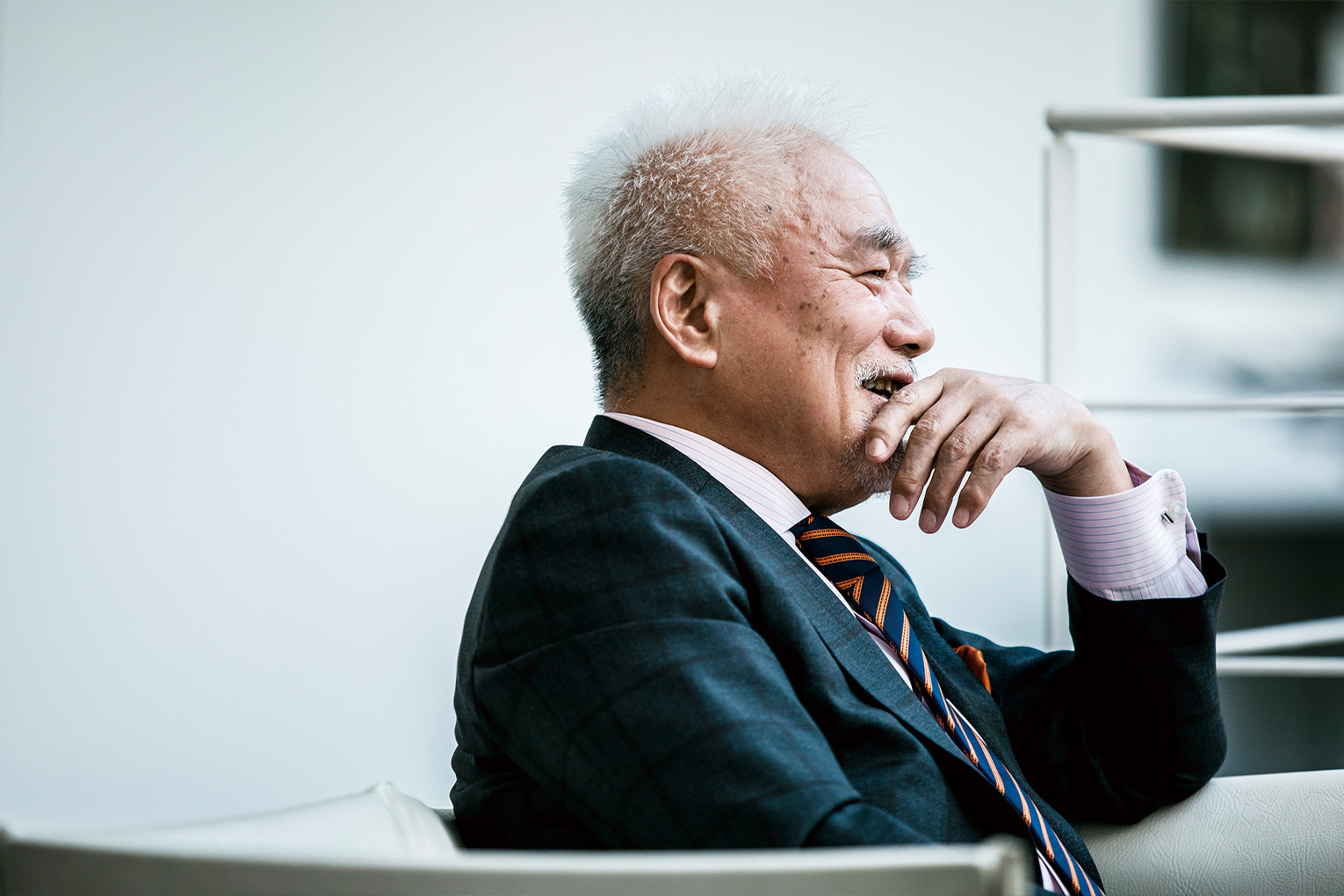
KURAKATA
This is true. It would be interesting to have a building like that. I'm currently involved in a project in Tokyo called Ginza Sony Park Project. We are renovating the Sony Building that was built in Yurakucho in 1966 into a totally unique, first-of-its-kind architectural form. We've been in discussions with Sony for the past 4 or 5 years about whether to rebuild the original structure or do something entirely different on the site. Currently, we are in the Ginza Sony Park phase, after having deconstructed the original Sony Building. The site was selected in 2019 as one of the "GOOD DESIGN BEST 100," making it a candidate for Special Awards such as the Good Design Gold Award. The previous building used a split-level floor plan. When renovating a building, you cover the exterior during construction, so the next time it is unveiled an entirely new building emerges. This time, however, we approached the project as an ongoing process. Before deconstructing the original building, we planned an event titled Sayonara Sony Building to say a proper farewell. The idea was to celebrate the exceptional character of the original Sony Building and to get others to recognize its importance. Next, we tore down all parts of the building that were above ground and turned the area into a park ahead of the Olympics. This is the current Ginza Sony Park. We are now considering the next form it will take. Instead of just immediately putting up another building, we get to see the entire process which creates a sense of attachment to the place. It's a kind of experiment to see how best to use a building. There's other options out there besides quickly rebuilding a replacement.
TATENO
That's a great idea.
KURAKATA
It's just as you said. Taking your time to build something isn't such a bad thing; in fact, there can be advantages to this approach.
TATENO
If you are renting out a building and have to renovate it, it might make sense to get it up and running as fast as possible. However, for public buildings, it could be worthwhile to take a long-term approach and show the whole construction process. This is what, in effect, has attracted so many tourists to come and see Sagrada Familia. It would be really interesting to recreate that experience in Japan. You could also show off architectural techniques and methods in the process. Exhibiting all the different materials and hardware used in the building's construction would demonstrate how they all come together to form the final completed structure. I feel there is something to taking it slow and creating something new that bears consideration.
KURAKATA
I totally agree. If you shroud a building entirely and then suddenly reveal it when it's finished, people have no clue what happened on the inside. I think people want to know how all the pieces, big and small, come together in the end. We develop a fondness for something when we understand the processes behind it. I want people to reconsider building things quickly and behind closed doors, in favor of showing the construction process in the open as it slowly unfolds.
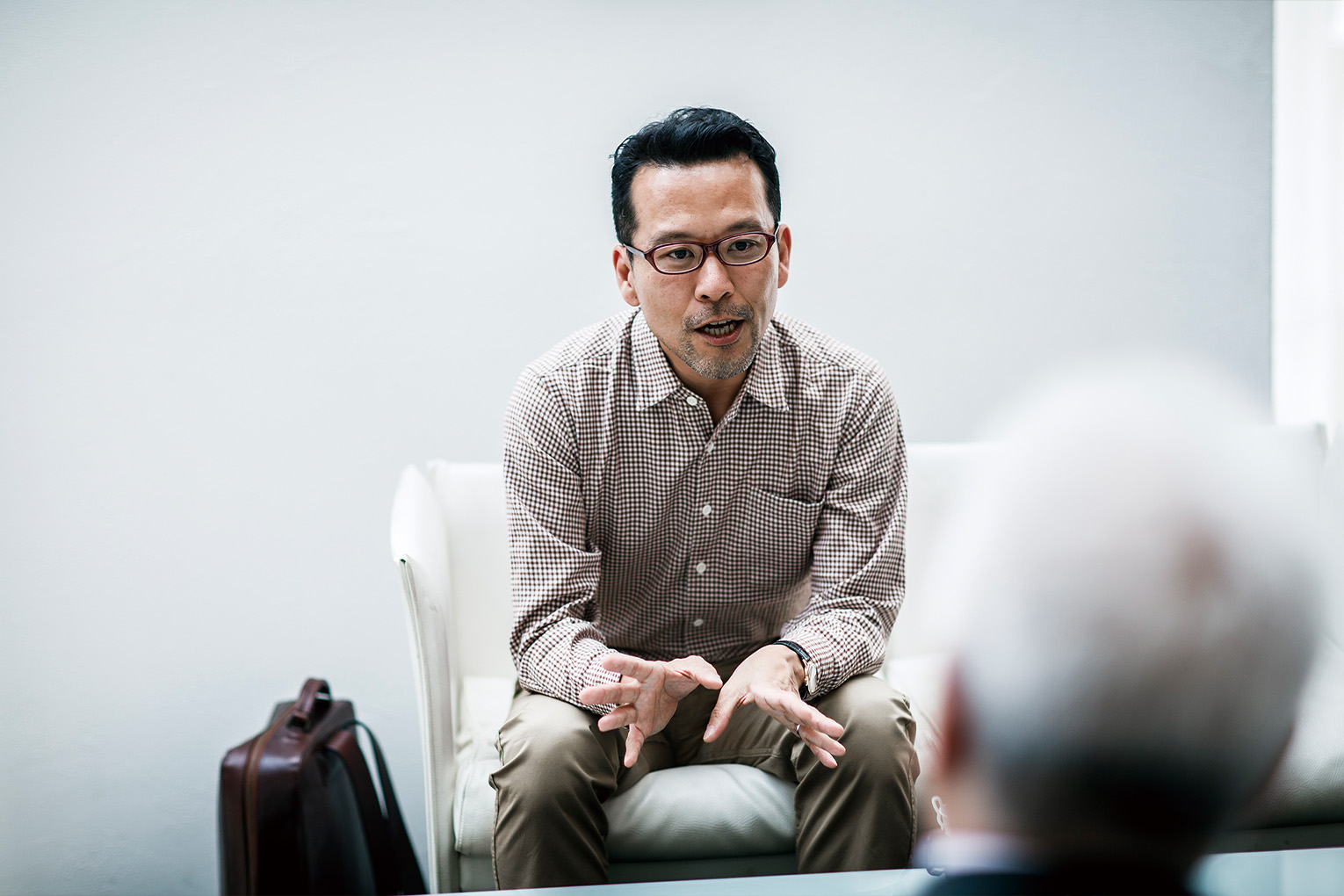
TATENO
I'm not as versed in history as you are, but were many of the architectural wonders discussed in our social studies classes built in this same time-consuming manner?
KURAKATA
The long construction periods for premodern structures were mostly a matter of budget. They would build up to a certain point, stop, and then start again, but the actual time spent doing the work didn't vary that greatly. For example, it's said that Istanbul's Hagia Sophia with its massive dome only took 5 years to complete.
TATENO
Back then, it might have been possible to get a large number of artisans involved as well.
KURAKATA
Technical progress is less about speeding up the building's actual construction and more about improving the safety of the workers involved.
TATENO
What was your inspiration for launching Club Tap?
KURAKATA
I myself wasn't directly involved in the formation of Club Tap. It started when its predecessor the Hankyu Culture School closed its doors. The people who had attended the school's architectural lectures decided to do their own thing, which led a group of private citizens and former attendees to found Club Tap as a new place of learning.
TATENO
And you were asked to take part.
KURAKATA
That's right. Until just recently, I was teaching a class for about 2 years on the Meiji Era, which was then celebrating its 150-year anniversary. Signaling the start of Osaka's modern age, this period saw the construction of numerous factories as well as Osaka City's renowned Central Public Hall. As such, there was deep meaning in holding this lecture in Osaka. These 150 years of Osaka history are in many ways a microcosm for the same 150-year history of greater Japan. Now that I've finished that lecture, they've asked me to start something new. So I've begun teaching a class on understanding the character of a place through its architecture by looking at architectural works around the world.
TATENO
I see. These types of environmental factors have had a big impact on Japanese architects.
KURAKATA
Exactly. The architect's identity or nature is different from country to country. There is a tendency among architects, however, to think of themselves as a type of artist working under a king figure. Of course, this king can change to the emperor or the state depending on the times. That said, what remains the same is the desire to create something beautiful and compelling. It's a different mindset from the person thinking up the structural plans or installing the air conditioning.
TATENO
Yes, it's the difference between architecture and engineering.
KURAKATA
Right. In England, they pay attention to how the building will come together and create a sturdy structure after carefully surveying the ground upon which it will sit. There is a strong belief that, as an artisan, it is the architect's job to ensure nothing inferior is delivered to the client. In Italy and France, by contrast, there is more of an artistic tradition. The standard concept of the "free architect" who performed a variety of jobs from their own private practice in town took root in 19th century England. These architects were expected not only to focus on artistic concerns but on building solid structures capable of withstanding earthquakes; all this while designing and completing excellent buildings that reflected the intentions of the client. This architectural approach was first introduced to Japan by Josiah Conder, and passed down through Kingo Tatsuno and his apprentices. In the end, this way of thinking seemed perfectly adapted to Japan's traditional culture.
TATENO
That's fascinating. In a positive sense, Japan went on to develop these principles further.
TATENO
When the world expo was held in Osaka before, many young architects took it as their chance to do something big.
KURAKATA
I think that was the feeling.
TATENO
But now I think the younger generation doesn't get as many opportunities, so it's really important we give them new chances to shine.
KURAKATA
That is so true. Going back to Gaudí for a moment, I think the first clients to give him work were very insightful. In the beginning, he wasn't the famous architect we know today. It's impressive they took the leap and gave work to an architect before he'd made a name for himself. And in the end, the people of Barcelona, Spain are benefiting from the foreign capital flowing into the city from admissions to La Sagrada Familia.
TATENO
You don't run into people who will finance massive projects like that anymore these days.
KURAKATA
It really is a sad state of affairs.
TATENO
Back in the day, there were many patrons for architectural works. In Japan now, I can't think of anyone like that. The ideal is to find someone who will finance the work but step aside and leave all the details to the architect.
KURAKATA
Yes, providing as much freedom as possible is important.
TATENO
This is why I want to give more opportunities for young architects to engage in actual projects at the coming world expo -- like in the past with Kisho Kurokawa and Arata Isozaki. Isozaki was a graduate at the time. Can you believe that? That's how much opportunity there was for young architects back then. And now look at him! He's a world-renowned legend of architecture. That's why I think we should use the coming world expo as a chance to cultivate future architectural talent that will go on to work internationally.
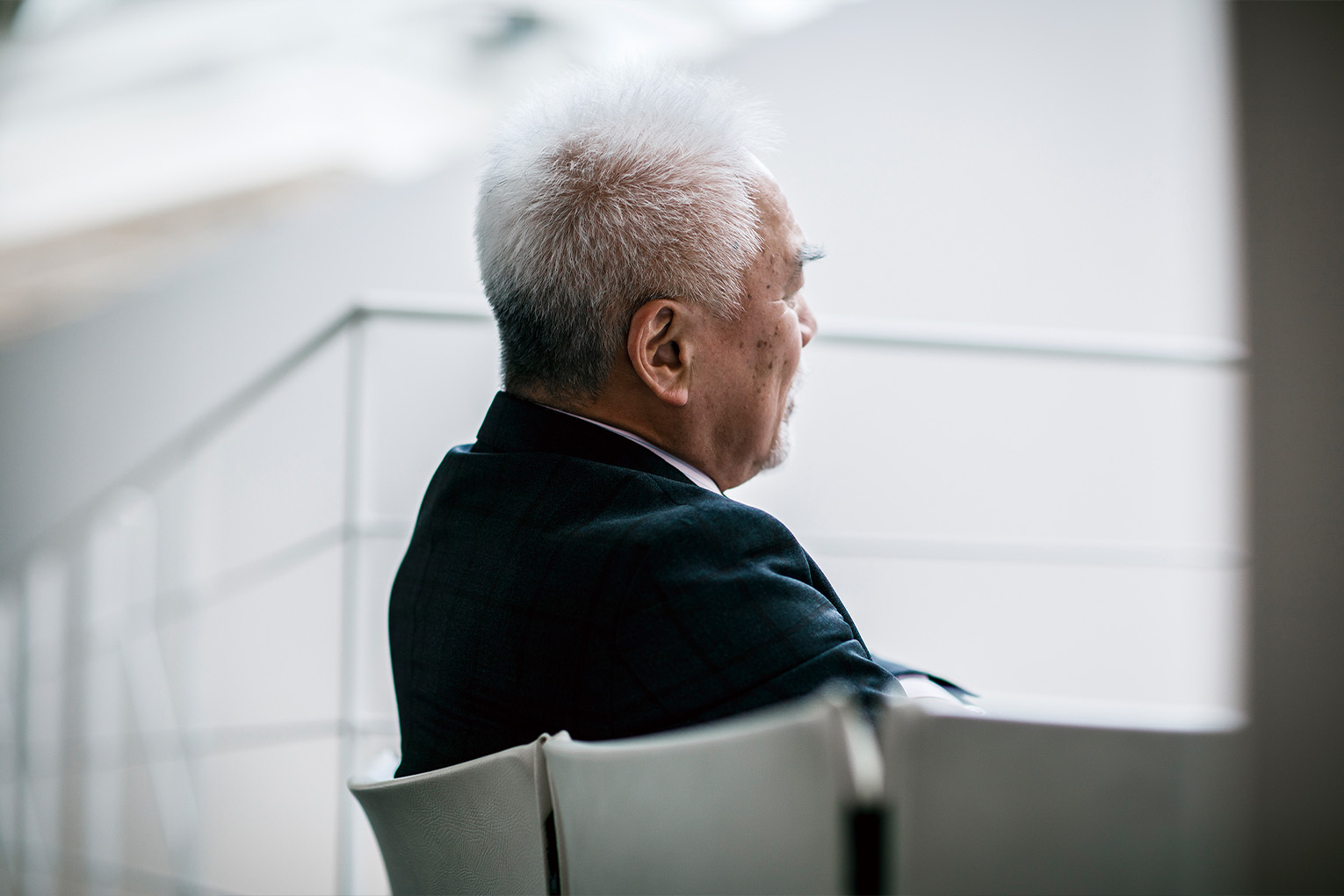
KURAKATA
I couldn't agree more.
TATENO
Now, you can't get work unless you go overseas. It feels like things have gotten turned completely around.
KURAKATA
You spoke before with Tsuyoshi Tane, didn't you? He's been our one saving grace. He left Japan and took a shot at designing the Olympic stadium. In truth, these types of opportunities should be available to people inside Japan. Now, if young architects can't find a place to work within Japan, they have plenty of avenues to explore overseas.
TATENO
Exactly.
KURAKATA
This is why people head overseas, receive experience and new opportunities, and then come back to Japan. Finally, a world-class Japanese architect like Tsuyoshi Tane has appeared on the international stage. But Japan really has to start offering architects more chances domestically.
TATENO
I completely agree. I feel like Japan is just continuing to shrink and turn inward, and what chances that are left will soon be gone.
KURAKATA
That is a real concern. Countries like Finland and Denmark have populations of around 5 million people. Sweden is only 10 million. Which means, Japan consists of many multiples of Finland in terms of population. But there are still really famous international designers from Finland, so Japan should have many times the cultural presence of these smaller countries. Even if Japan's population shrinks to 100 million, it still is relatively huge. And each region has its own influence. For example, Kyushu has a population of 10 million and Osaka is even more than that.
TATENO
When you put it like that, we really do have a lot of people.
KURAKATA
Right? So, if you think about each region as its own country, we have to discover the young talent inside and work to unlock its full potential. By doing this, I believe more and more work for young Japanese architects will start to emerge domestically. If you think "well, we have a population of over 100 million," then people take the safe path. This is why we have to first change the way Japan thinks.
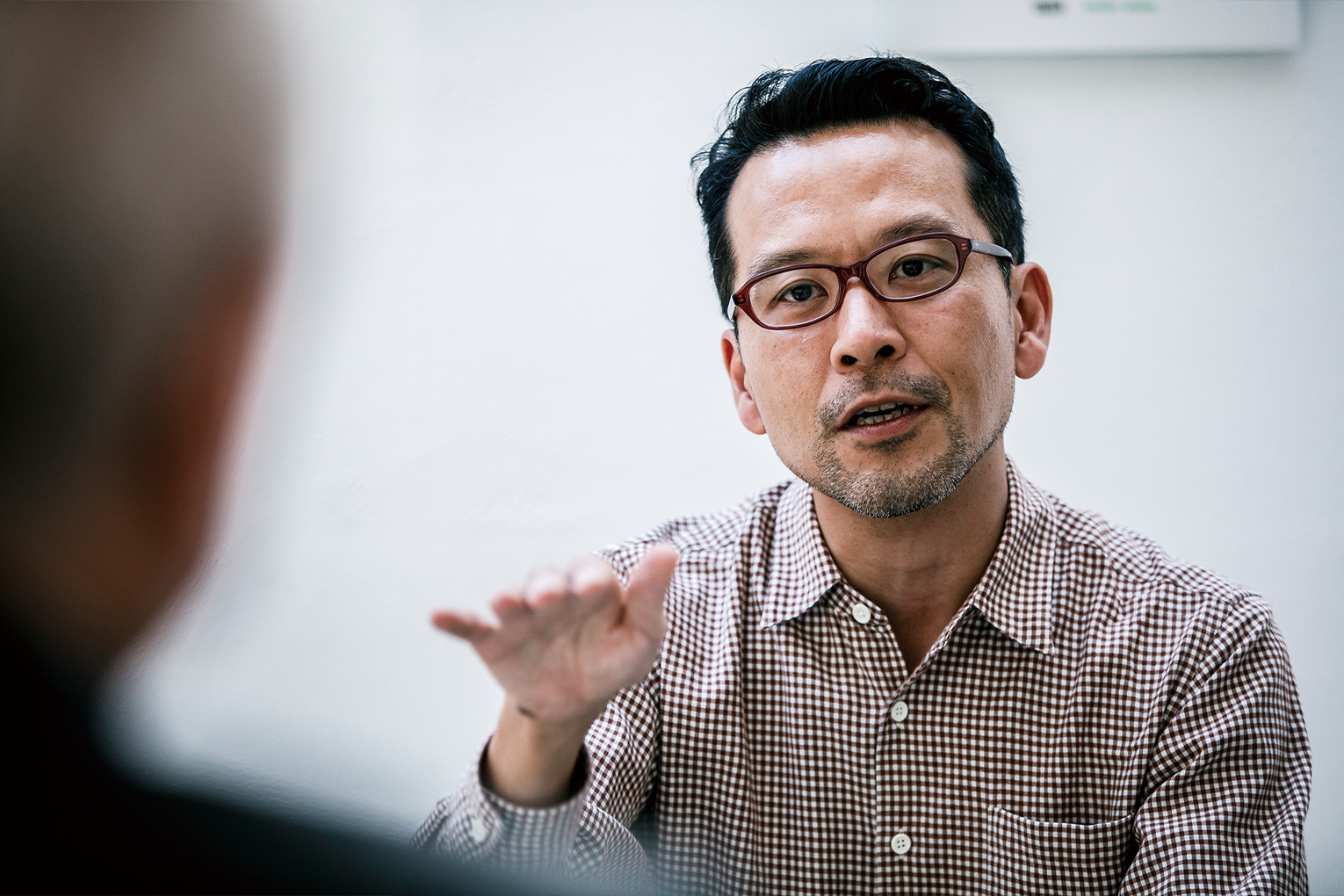
TATENO
In terms of reinvigorating local areas, as well, you have to start by changing hearts and minds.
KURAKATA
That's right.
TATENO
If we don't begin building more and more exciting architecture, we won't be able to breathe life back into these local communities.
KURAKATA
That said, creating allure for a place and giving it the ability to create it for itself are two different things. Each region or locality has an inherent uniqueness, and architecture is one of the elements that helps draw this out. To revitalize a community, you need people born there with an interest in architecture to return, or you need architects from other areas to take interest and move in. Japan still doesn't have enough inter-regional migration. In America and Europe, many people go out and work in places other than where they were born. In Japan, people either stay in their hometown or move to Tokyo for the most part. This is one area where we are still a late developer.
TATENO
Japanese people need to venture out of their comfort zones.
KURAKATA
Japan stretches a long way north to south, with both hot and cold climates. This alone sets it up for a lot of natural disasters. Still, there is not much chance that the entire country will get caught up in a nationwide calamity. If one area is hit by an earthquake, another area escapes completely unscathed. Through this, we are able to help each other out, and switch bases of operation to another locale as necessary. It's difficult to put into words, but one of the strengths this country gives people is the ability to pull together and learn from one another when something happens, while still maintaining a local identity.
TATENO
You are often overseas, aren't you? I've seen some of the pictures you've taken, but do you ever make any sketches?
KURAKATA
I'm not a designer myself, so unfortunately, I'm limited to what I can photograph. *Laughs.*
TATENO
Were you originally aiming to become an architectural historian?
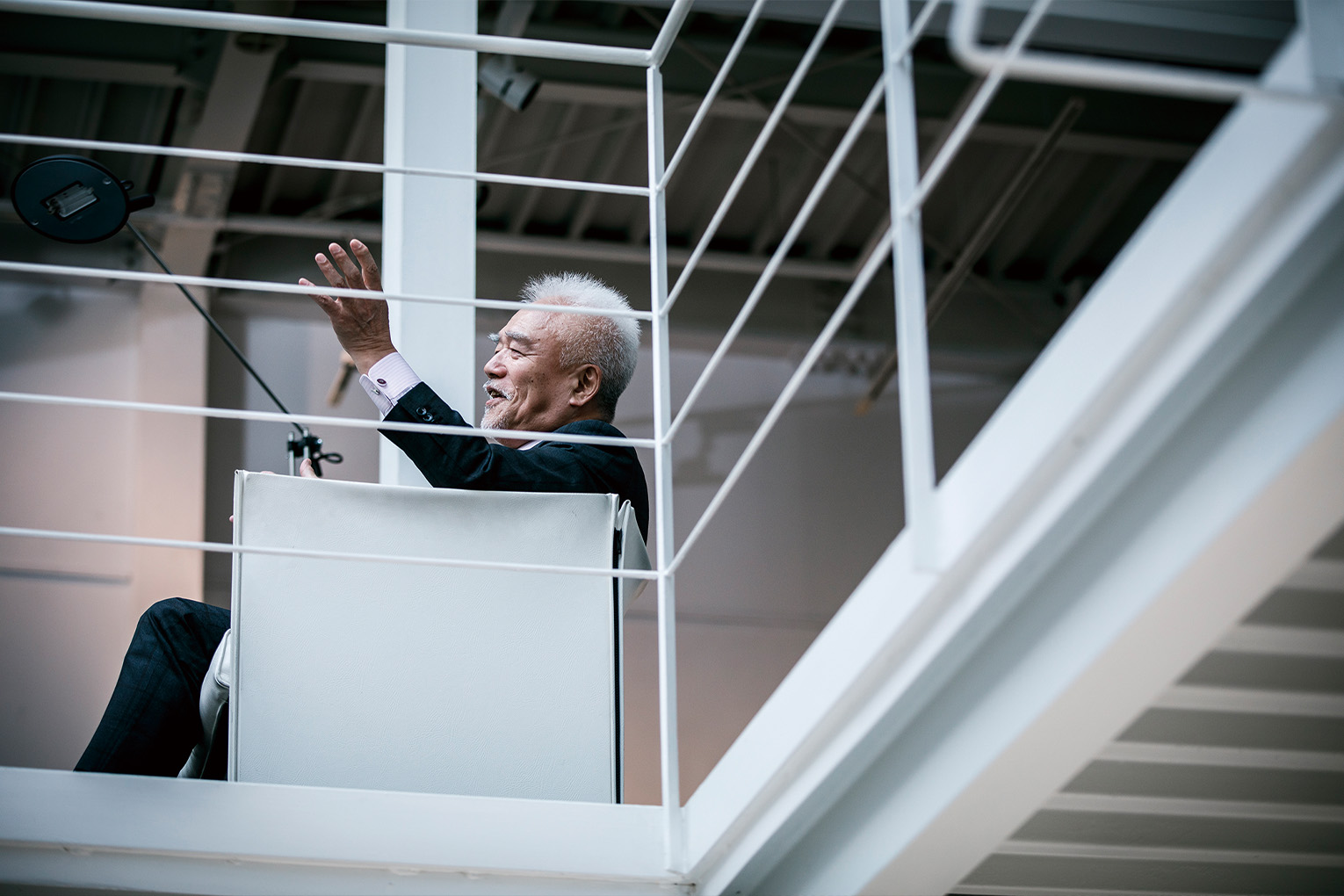
KURAKATA
Originally, I wanted to learn more about architecture itself, so I selected the department of architecture. In my third year of high school, I spent a month and a half in summer and one month of winter in Paris. At the time, I wondered how cities and buildings could be made to look so different from what I was accustomed to. This sparked my interest in the subject. Architecture is a blend of art, science and society. I found this fascinating and decided to enter the department of architecture at school. I didn't particularly want to build something myself. Many people who study literature have no intention of becoming literary scholars; they just want to know more about literature. I was a similar case.
TATENO
There are many people like this.
KURAKATA
But after entering the department, I found out that at my university in particular everyone wanted to become an architect. *Laughs.*
TATENO
Did you spend time building models and doing drawings then?
KURAKATA
Grudgingly, yes. *Laughs.* I had to in order to pass. When I entered university, I wanted to study architecture in the broad sense, but there was not any major like that in Japan at the time, so I selected the closest thing -- the architectural history research lab. Even a lot of architectural history researchers were interested in modeling and designs, which made me a bit of an outlier.
TATENO
I see. You said that your trip to France is what first sparked your interest in architecture. It's interesting to see something like that can be the starting point for all this. I hope more young people find something like you did.
KURAKATA
Young people these days seem to spend more time thinking things out. I simply decided to study what I was interested in and the logic and correctness of my choice came after. Today, young people think they've either already missed their chance, or they have to go work at a construction firm after graduating from an architectural department in order for their story to make sense. There's a tendency to think you must explain everything logically from start to finish from the beginning. I think you should try something out the moment you take an interest in it. If it turns out you were wrong, change course.
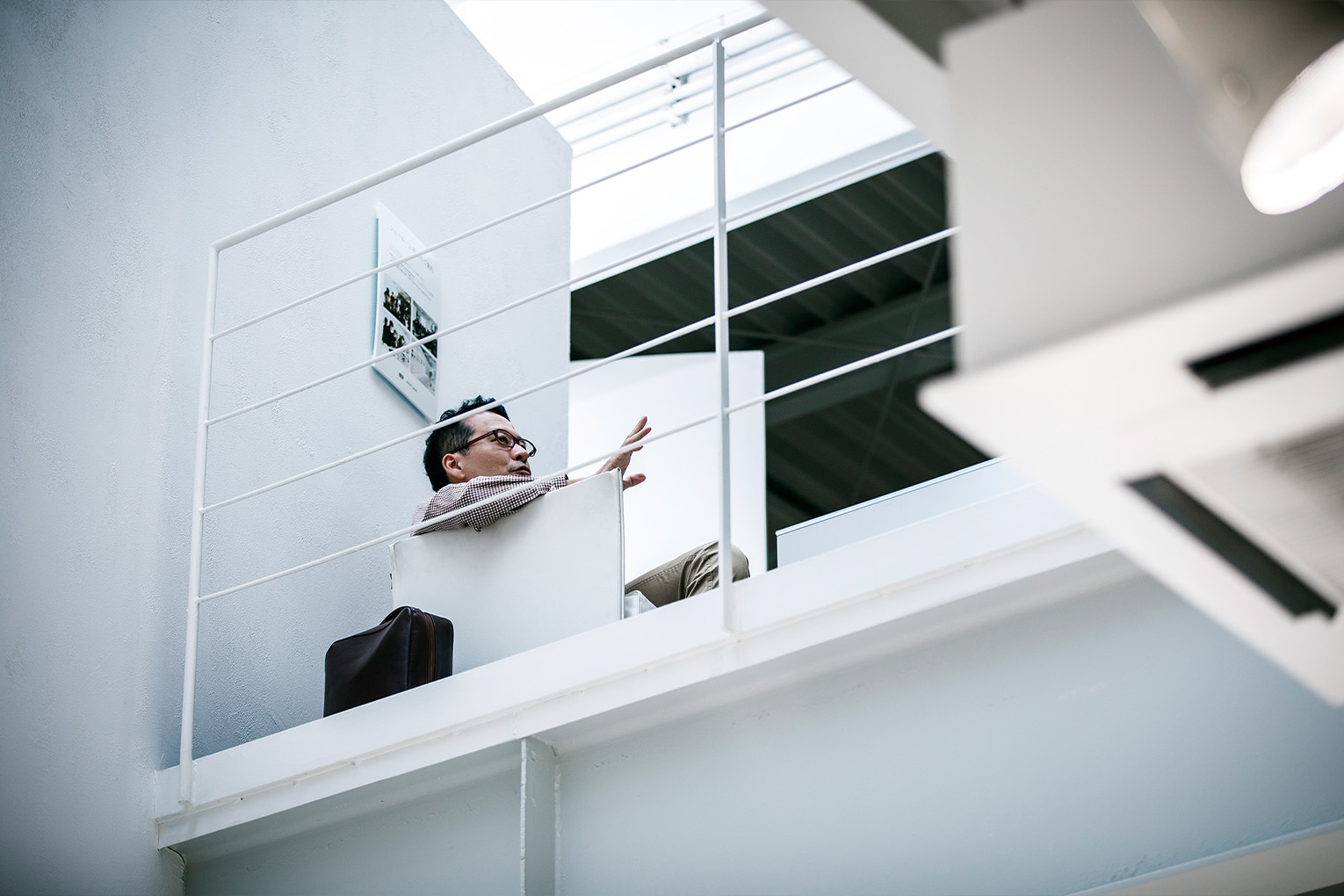
TATENO
People do live to 100 years now. I think it is important to find some kind of dream or spark to guide you during your student years though. I want young people to go out and experience more, but it seems the opportunities just aren't there these days.
KURAKATA
Some people feel it's their job to do what society expects of them. Graduate from elementary school, go to junior high school. Graduate high school, go to university, then get a job and so on. A lot of people seem to be tracing the path of what is expected and end up spending their whole life on their job. At times, they don't even seem to be enjoying themselves and just go through the motions.
TATENO
The only people who seem to be having fun are the otaku. You are able to enjoy your work while learning about history. To me, that is success.
KURAKATA
Essentially, I believe work and play must be connected to a degree. But some people think that doing things regardless of your interest in them is what defines work, and you can have fun when you're finished. Work in essence is hard. There are some good points to this, but I work because it is something I want to do, and the things I do for fun also tie back to my job.
TATENO
That is very true.
KURAKATA
We have to start showing young people examples of how you can still create a proper profession and be of value to society by doing this. I think adults have taught the younger generation that work is tough, and it must be done in all seriousness.
TATENO
In the long run, if you don't enjoy your job, it won't last. People do better work when they're happy, and the results follow. This is something I want young people to recognize.
TATENO
I've always wanted to go with you on one of your architectural tours. Showing students all the labor and steps involved in a building's construction must give them a sense of the real-world business side of things.
KURAKATA
As someone engaged in the architectural world, I want to be as much help as possible. I can't create things myself and have the utmost respect for what I cannot do. My background in history has given me this. My hope is to provide a mutually stimulating experience between myself and the young people I guide.
TATENO
I'm sure you know a lot about Japan's various architectural forms and traditions. I do my best to stay informed as well. But today, exceptional examples of Japanese architecture seem increasingly harder to find. That's why I think we need to start making more exceptional architectural structures. If this pace continues, there won't be any space left to build something of merit. This worries me.
KURAKATA
I'm also concerned about that.
TATENO
At UNION, we can't work unless we get an order for something. This isn't just a hobby of ours. I wish architects would demand something new from us. Most people end up going with ready-made products. Without a challenge, we can't maintain and build our skillset.
KURAKATA
I see what you mean. In the 60s, architects would come to you asking if you could make something, and you would create a new fitting or handle. In the end, you compiled everything in catalogues. This process was what brought architectural works to completion. Now, I imagine many people don't even think to ask.
TATENO
I heard this from someone, but in the past architects used to select everything from the fittings to the furniture, themselves. Is there anyone around like that anymore, I wonder? I feel there aren't enough people with this kind of passion for their work today.
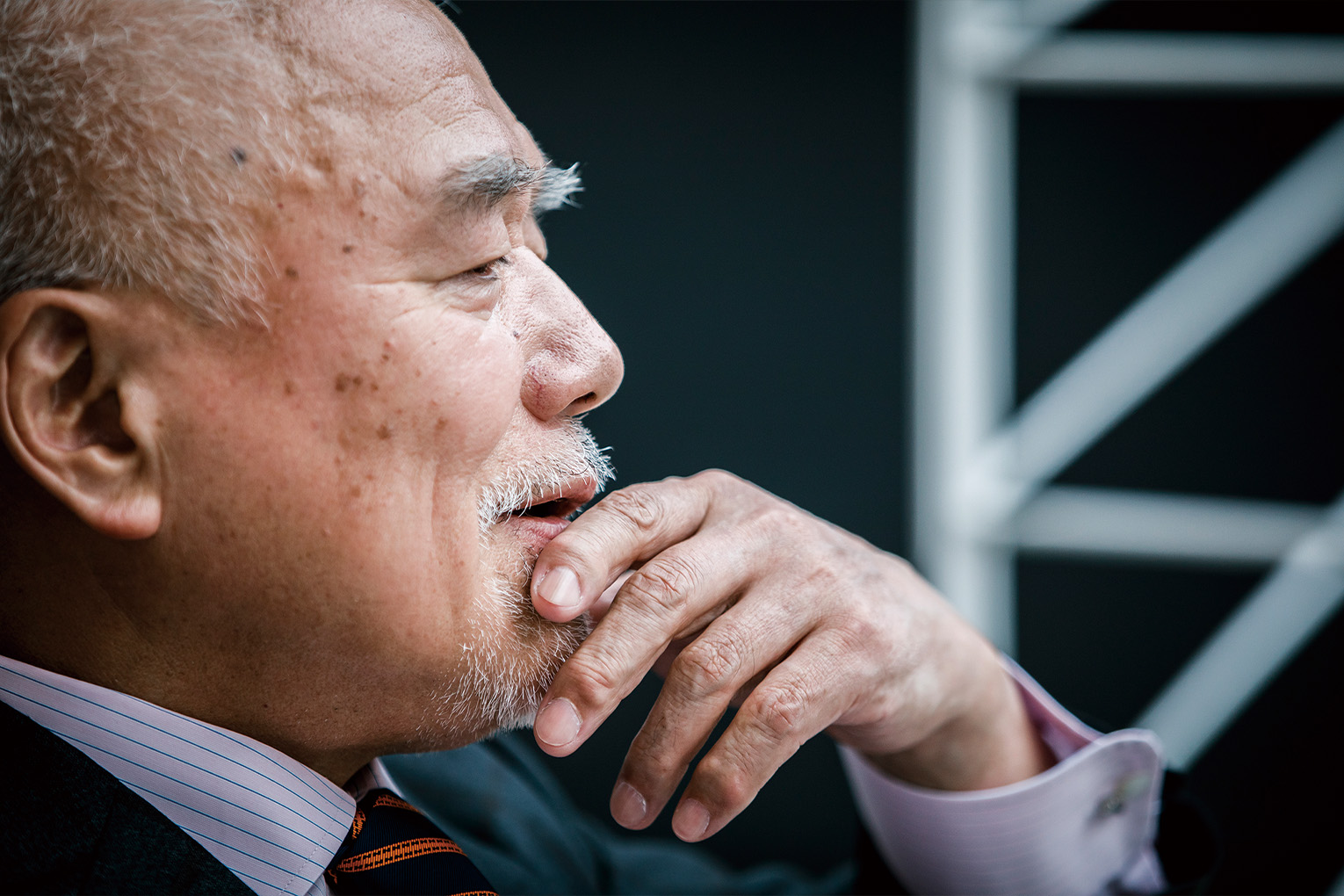
KURAKATA
I think you're right about that. In the past, the property owner or client didn't have much architectural knowledge, and there was not much information out there. As a result, things were left to the architect, and they used their own sources to select furniture and hardware. Now, people have access to a lot of information, and want to get involved even when they shouldn't. You get situations where they say "just finish that off and I'll take care of the rest." Part of the problem is with the architect. The other problem is on the owner's side. They think that once things have got to a certain stage, they can take over from there. The building and its interior are treated as two separate things. Architects have also accepted this relationship which has created a vicious cycle.
TATENO
We used to get some completely unreasonable demands. This had a big impact on us improving and honing our skills and techniques. Now, we don't get that. If we plan on building something exceptional for posterity, I'm starting to wonder if our company will even be able to create a new piece befitting of this. This is why we ask architectural firms to make something elaborate and ornate even if it's confined to just a single space. If they do that for us, we will find a way to make a piece perfectly matched to the building even if profit-wise it doesn't make sense. We want to be challenged more by the projects that come our way. Unfortunately, this just isn't happening right now.
KURAKATA
I think that's part of what makes work enjoyable. The good comes with the bad. The pleasure derived from work can cause a chain reaction. If you see the other guy's committed, then maybe you'll get onboard even if it doesn't make the most business sense.
TATENO
Architects used to be able to do all this themselves.
KURAKATA
Meaning?
TATENO
The architect would get the project, make the orders and monitor the work's progress. That gave us ownership over our trade.
KURAKATA
I see.
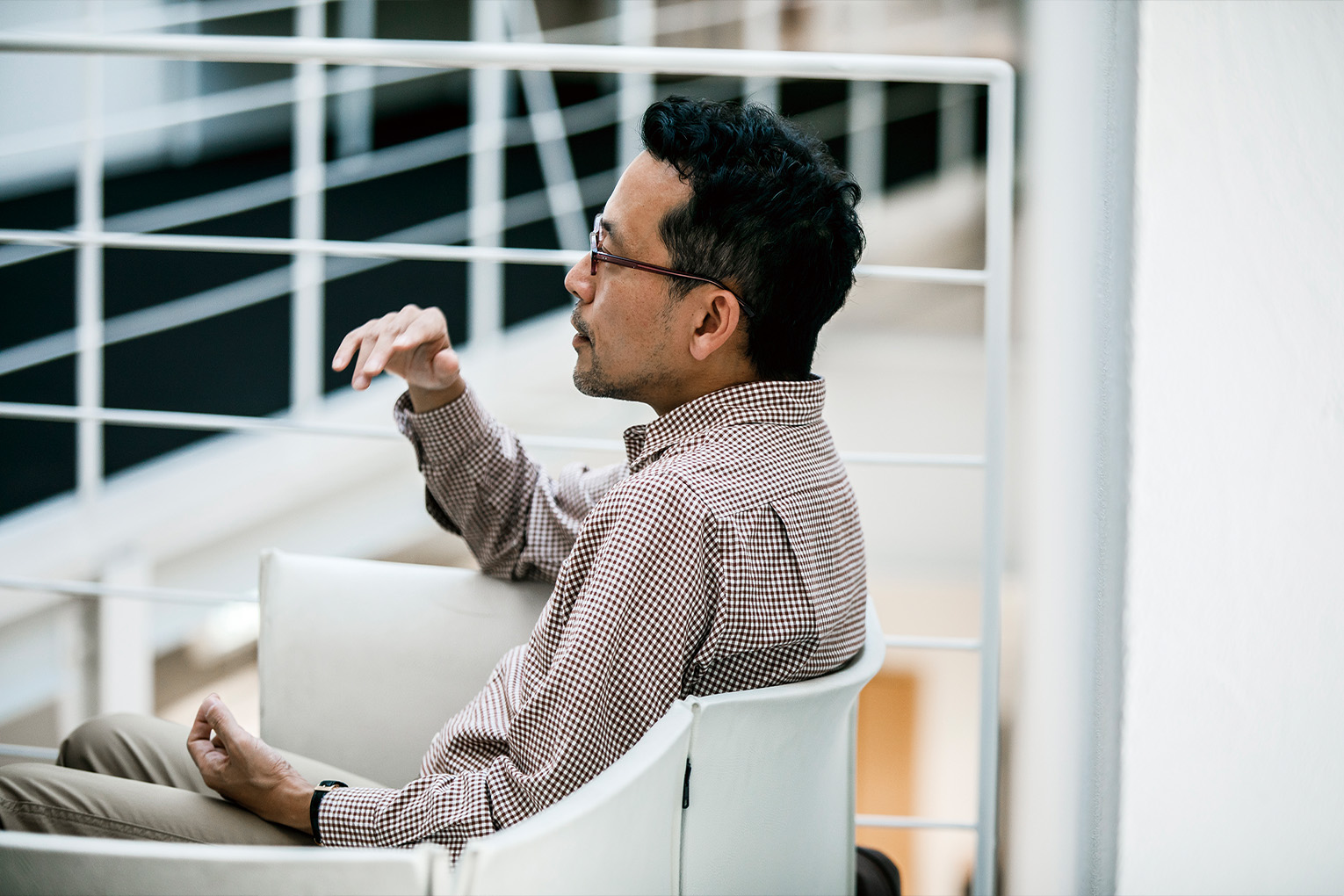
TATENO
Now, there's a different person in charge of each process. It's all segmented, so it's hard to develop that same depth of understanding. I think today's architects may be confronting these same issues.
KURAKATA
This goes back to our discussion about students, but I think this way of conceptualizing work as compartmentalized, specialized professions has become prevalent in society. Roles are clearly divided, and the extent of one's professional jurisdiction is fixed. Even if you don't enjoy your work, part of being an adult is to do what is required without complaining. This is all people know about the meaning of work. If people are able to engage in the entire process, they enter a sort of community bound by a common destiny and understand the importance of seeing the process through to the very end with the client. Even if the end result is good, if there are issues along the way, it's still important to take ownership and responsibility of the things that went wrong and not just brush them off on someone else. Otherwise, the work will stop coming in.
TATENO
We need more people to see work as both a difficult and exciting process.
TATENO
You spend your time visiting architectural structures and studying their history. This must really get you interested in the story behind each architectural work.
KURAKATA
Yes. For people visiting a piece of architecture, it doesn't matter where the architect's job stops and where the interior designer's work begins. If you separate these two things entirely, you get an inconsistent experience of a space. Dividing up work is mostly done to the benefit of the people making the actual building, not the visitor. And I understand this way of doing things. But sometimes it feels too straightforward and lacking in passion. I believe this sense of passion is what gives an architectural work its appeal and value, attracting and inspiring the people who visit it.
TATENO
Interesting. In Europe, you get the feeling on a town-wide scale. Kyoto used to be like that as well, but Osaka just had everybody doing their own thing. There's not much of a spirit for creating a single landmark to bring the city together.
KURAKATA
Yes.
TATENO
As you have said, Japan must encourage the creation of cities that, when viewed in their entirety, inspire wonder and embody a unique character.
KURAKATA
There's a secret to getting everything to blend together into a consistent whole. And there has to be conflict and friction along the way to achieve this sense of unity. Things that appear to coalesce in the end always encounter some bumps along the way. A city can never create a sense of wholeness without conflict. If each occupation starts making its own excuses, the visitor gets forgotten in the process.
TATENO
Exactly. Japan needs to start creating architecture unlike anything that has come before it. Without that, we will soon get left behind.
KURAKATA
I agree. All people have an inner desire to see something novel and unique. Some people hate mixing the old with the new, but if something with a truly innovative quality is created, the city will follow suit. Buildings, whatever their age, assert themselves on a landscape. They come together to rejuvenate the area.
TATENO
When a building really fits with a town, it creates the sense that, without it, things wouldn't look right.
KURAKATA
My thoughts exactly, That's why buildings that feel in some way derivative soon become obsolete.
TATENO
Which is why I want to give young architects the chance to create lots of ambitious new architectural works for the world expo. Osaka needs an opportunity like this right now.
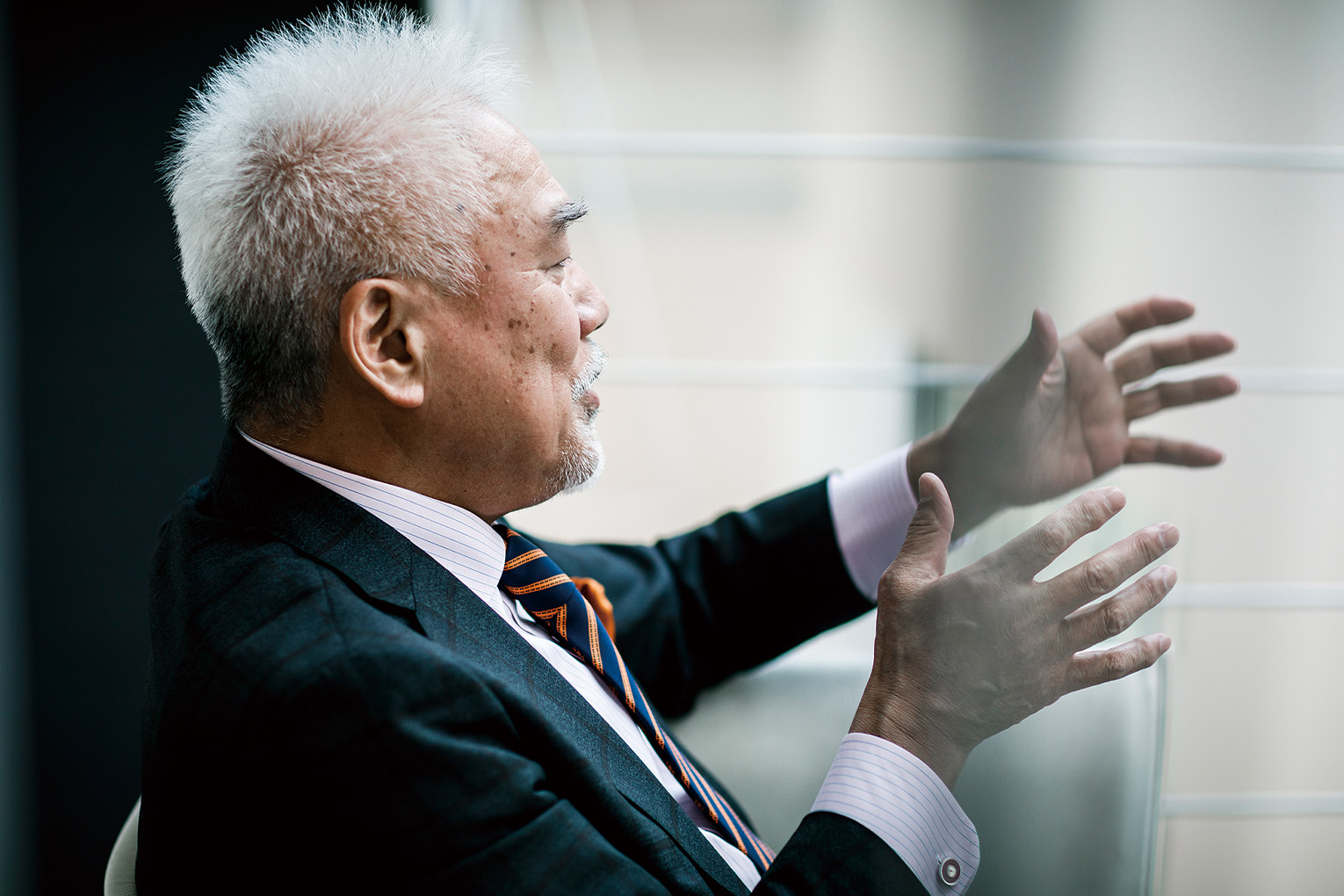
KURAKATA
Yes. My impression was that Osaka used to be the city that gave something to visitors from the outside. I'm not from Osaka originally myself, but it seems this city doesn't just belong to the people who were born here. Osaka isn't just another regional capital. Osaka is Osaka. Cities like Paris, London and New York are made up of people who originally came from somewhere else. I believe that, just like these great cities, Osaka has the power to unlock one's true potential. The world expo held here in the 70s had this power as well. For example, Kisho Kurokawa, who was involved in designing a lot of the pavilions, had no initial connection to Osaka. If Osaka loses this part of itself, it will become just like any other regional capital.
TATENO
True. The majority of people who have found success in Osaka all came from surrounding regions. Maybe they were inspired in that uniquely Osaka way and given the chance to create. Now there's this sense that you have to go to Tokyo in order to truly participate in your field.
KURAKATA
In that sense, I feel all of Japan has become really conservative. Osaka may just be a microcosm of this larger trend.
TATENO
If more people with ambition come to Osaka and start doing business, it could start a positive chain reaction. This would give us the chance to start pumping new things out into the world. I'd like that.
KURAKATA
The 2025 world expo being held in Osaka provides the perfect opportunity for that. I feel like Osaka has cultivated a tradition for providing a platform to people coming from the outside to accept each other's differences and interact. If we can include the rest of Asia in this exchange, then we can really make something new. Something tells me that Osaka is better suited for this in many ways than Tokyo.

TATENO
You may be right. Tokyo does have some really interesting things architecturally speaking though.
KURAKATA
This is true. I do feel the quality of work provided by general contractors and other firms in Osaka is truly exceptional. But there is still something missing from Japanese cities. Can you name any notable works worth visiting in Osaka that the world-renowned Osaka native Tadao Ando designed?
TATENO
Nothing really comes to mind. He has supervised some projects. We really have to start building bigger, more impressive works of architecture, don't we?
KURAKATA
If there aren't enough opportunities for future artists and designers in Osaka, then an exodus of talent will be one more worry to add to the mix.
TATENO
People in the Kansai Region used to build a lot of interesting structures.
KURAKATA
They really did. Before coming here today, I stopped by Mengyo Kaikan and Shibakawa Building. Shibakawa Building has iron doors affixed to all its windows, which is what helped it survive the air raids during WWII. It's an old building that's been there nearly 100 years, but still it attracts people and brings in money. When you think about it that way, it's not a very expensive investment in the long run.
TATENO
These days, if you make back the money you put into a building, that's enough. *Laughs.* This attracts a lot of different types of people to the industry.
KURAKATA
If you think about old streets lined with wooden structures, they were often complete with some truly unusual buildings. These future-minded architectural endeavors are still drawing visitors in today. I believe this phenomenon is one of Osaka's strengths. The reason I write books about architecture of the past is not to simply talk about how good things used to be, but to provide encouragement to people looking to challenge themselves today. The fact that a young architect was given the chance to make a building like that hints at a tradition still alive in Osaka today. My rallying cry for the future is found in my ongoing work to draw people's attention to previous architectural structures.
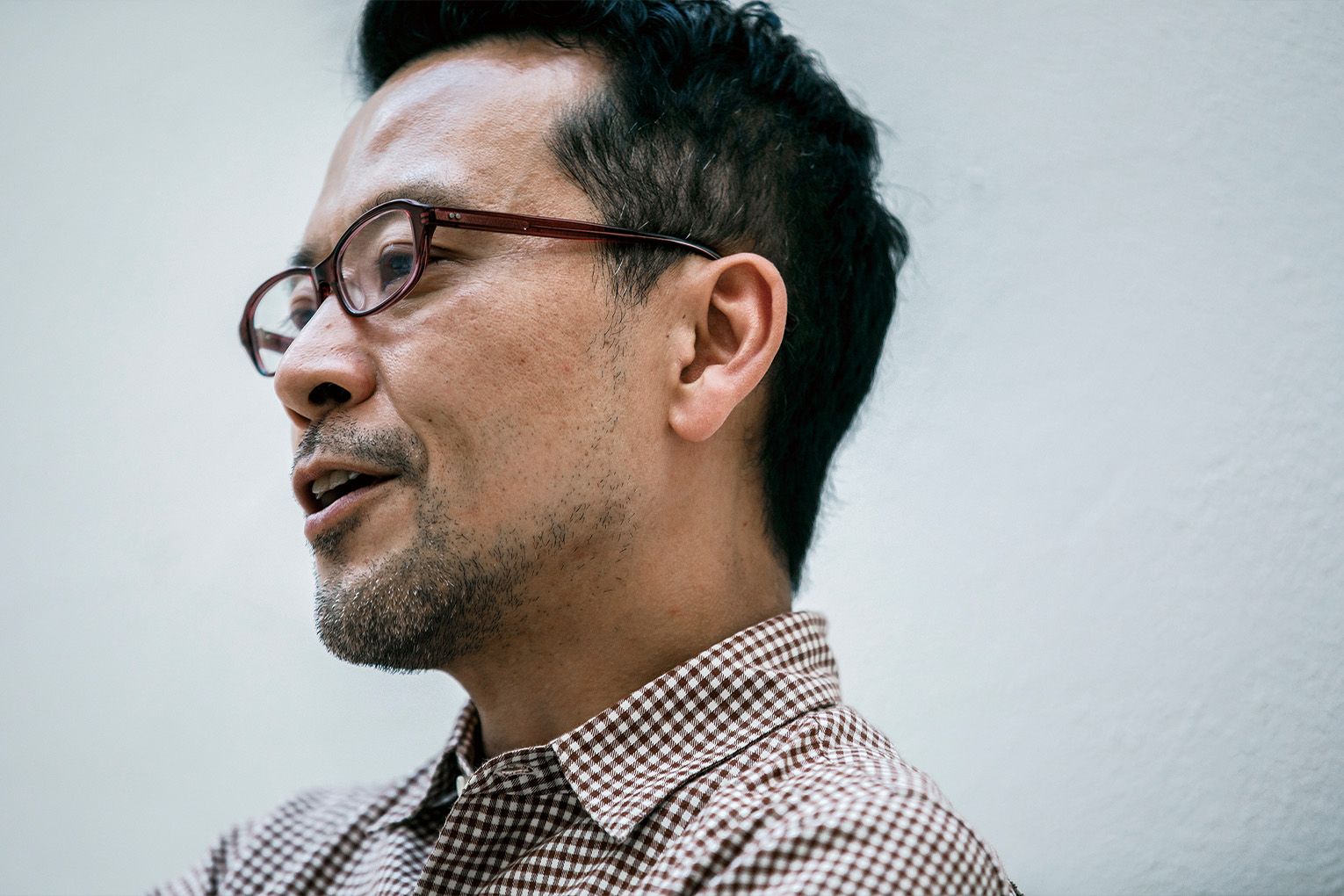
TATENO
Is that right? Giving young people the chance to do what they want is really important. How can they hold onto their dreams otherwise.
KURAKATA
You seem to really care about supporting that yourself, but you also have to follow the directives of the people requesting the work. I feel like you have to balance both sides: encouraging the youth to challenge themselves, while honoring the wishes of the client. It's important to recognize that you don't have to make something groundbreaking or be successful every time. Sometimes things don't go as planned and that's that.
TATENO
That's what I mean. *Laughs.* Barring an earthquake or other disaster, buildings remain standing for 100 years or more, when left to themselves. If people are still visiting a place a century later, that makes it an incredible asset. I'm truly proud when I get to work on a project like that. It's a real feeling of architectural romance to think that our company's products will coexist with and be a part of a structure like that.
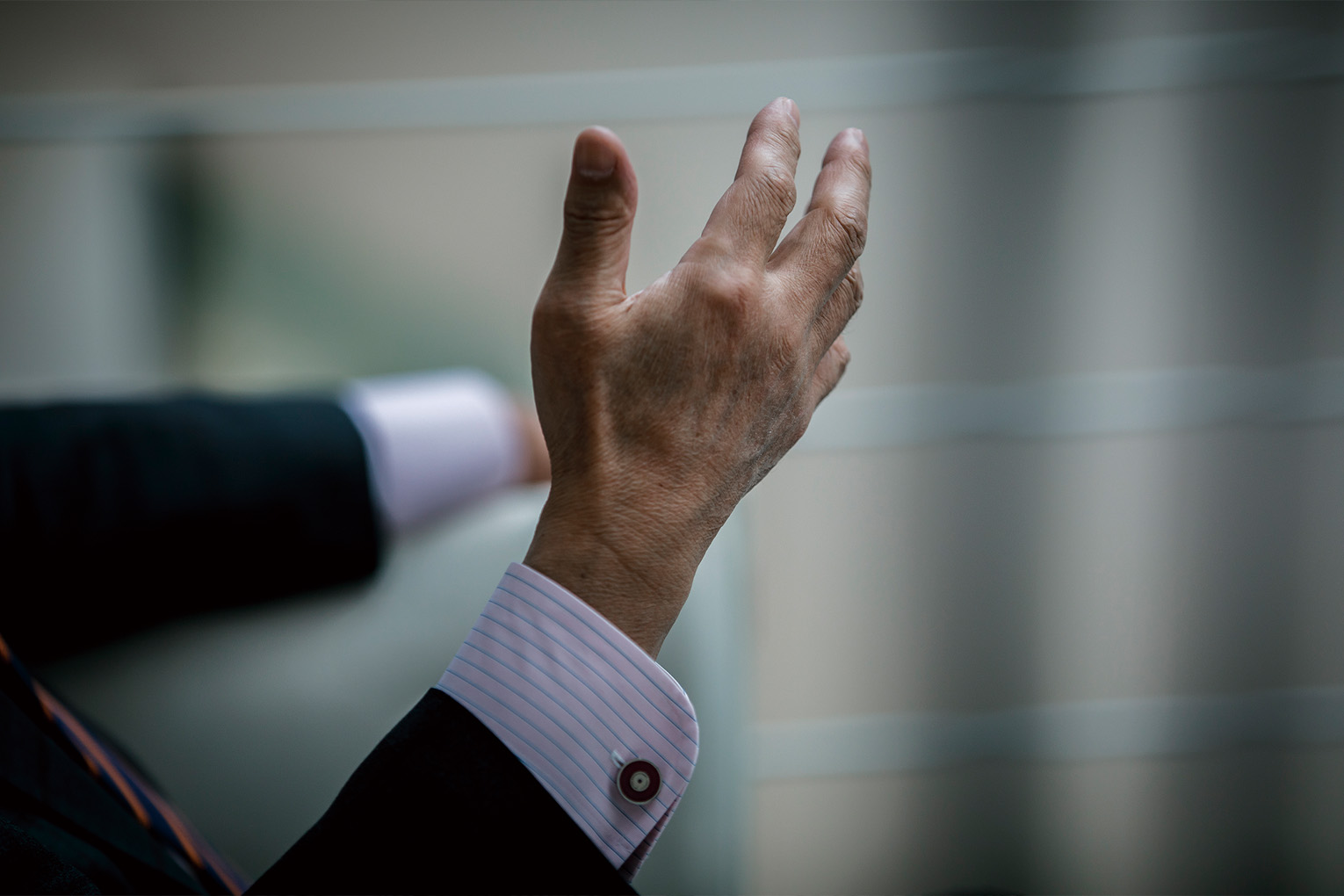
KURAKATA
We spoke earlier about patrons and patronage. These terms are not just assigned to the person requesting the work but also to the architect. The difference between an architect and a person drawing up the designs is the latter has a fixed deadline and set of expectations to meet, and there's no real need to go beyond this and think about making something new. The architect needs to think beyond this. And only by taking ownership and going beyond what is expected is it possible to create something fresh and move the world forward.
TATENO
I think that's exactly the case.
KURAKATA
Culture is created from the synergy embodied in patronage and the desire to make something together.
TATENO
We are always thankful for the opportunity to take up a new challenge. As I've said, it's impossible to improve our skills and techniques unless our products are adopted for new pieces of architecture.
KURAKATA
This is why I want to communicate more about the craftsmanship side of things to people who have taken an interest in architecture. How does a building come together? What parts are used where? Discovering these things is exciting. When the ideas of the architect coincide with the artisan's work and creations, that's when new architecture is born. I want more people to recognize this fact.
KURAKATA
Last year, Mori Art Museum in Roppongi held the exhibition "Japan in Architecture: Genealogies of Its Transformation." In just 5 months, 540,000 people attended the event.
TATENO
Wow, that many people?! That's impressive.
KURAKATA
That's right. That is a pretty unprecedented number for an architectural exhibition. When I was brought on to collaborate in planning the event, I made a few behind-the-scenes suggestions for themes.
TATENO
Is that right?
KURAKATA
One idea was to show people the world of the architect. We are able to create new and fantastic things because architects dare to dream. I want people not yet acquainted with this discipline to understand that Japan has some truly famous architects. More than our music or our manga comics, Japan is recognized for its architects internationally. Figures such as Tadao Ando, Kisho Kurokawa and Kenzō Tange are venerable legends in the field. I wanted to take this opportunity to show more people how architecture is where we are really leading the world.
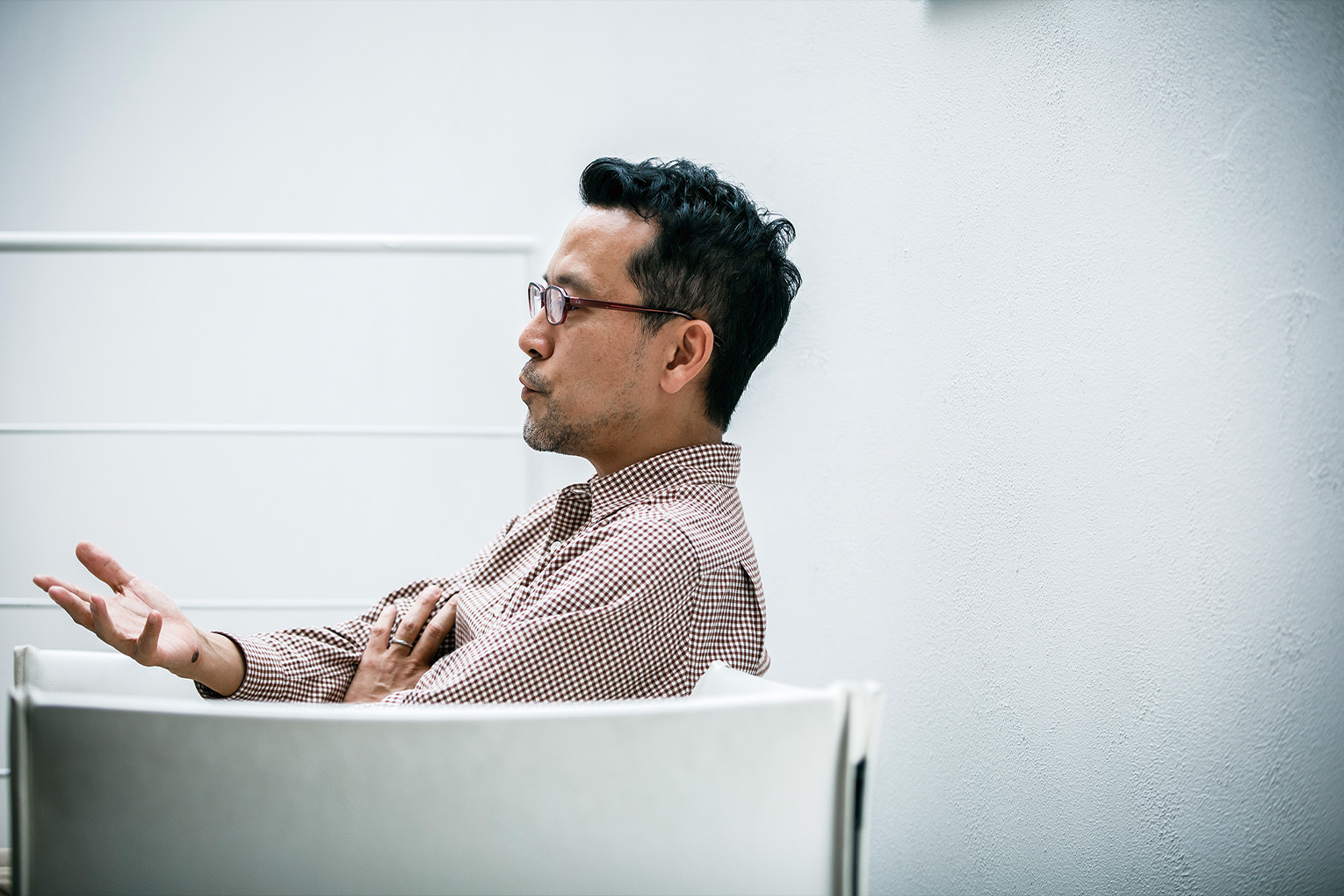
TATENO
That's great.
KURAKATA
Thank you. We tried to show the prowess of Japanese architecture through a series of valuable documents and materials, starting with some of Tange's own architectural models. The craftsmanship side of things is equally important. Structural models, joints, wooden frames. We put all this on display along with explanations. We spoke with Jun Aoki, who worked on the exterior design of various Louis Vuitton's shops, about how he came up with these facades, and displayed plaster cast models of the Nissay Theatre's ceiling, which was designed by Togo Murano. To make these pieces, there was a lot of trial and error executed at the architects' own hands. By understanding this back story, we can see how they achieved their final vision.
TATENO
Interesting. I'm still surprised you were able to get 540,000 people to an architectural event.
KURAKATA
Thank you.
TATENO
Hearing that makes me think that maybe a lot of people really are interested in architecture.
KURAKATA
We are finally approaching the west in terms of our interest in architecture. Our hope that people would take interest bore itself out in the end.
TATENO
There's no mistaking that the average person's interest in architecture is beginning to grow.
KURAKATA
Yes. That was reflected in the turnout. And in the case of Mori Art Museum, all explanations must be provided in two languages.
TATENO
They do get a lot of visitors from overseas, don't they? I'm sure being located in Roppongi has a lot to do with that.
KURAKATA
Exactly. Mori Art Museum receives a large number of international visitors for its standard modern art exhibits, but this time they said the number foreigners far surpassed their usual guest count. That was a surprise. I think this was due to the fact that we also focused on introducing elements of Japanese culture, such as traditional wooded constructions, through the lens of architecture.
TATENO
So, you were able to attract visitors just like the Mengyo Kaikan building we spoke of earlier.
KURAKATA
Right. I hope that property owners and clients who came to see the exhibit walked away thinking "if I'm going to build a house, why don't I add some more challenging and exciting elements to it."
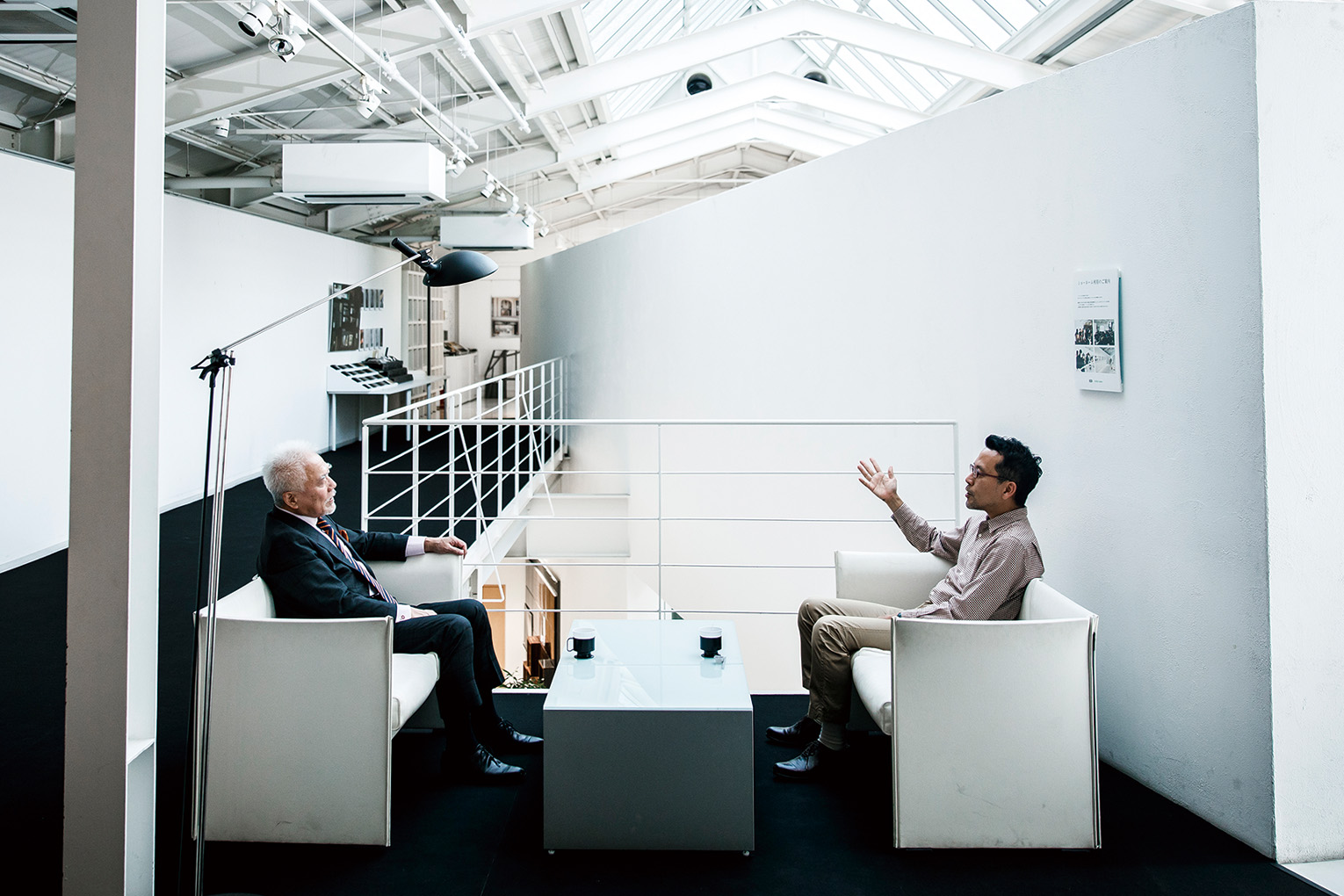
TATENO
I hope that's the case.
KURAKATA
For me, Mori Art Museum is a facility that would only be possible in Tokyo. Only Tokyo can mobilize the scale, capital and international appeal of a place like Mori Art Museum. I realized this when I got the chance to live in Osaka, after spending my whole life in Tokyo. There are some things that are exclusive to Tokyo. The same can be said of Osaka. Last year's "Japan in Architecture" at Mori Art Museum and Osaka's annual autumn event "Open House Osaka" -- which had upwards of 43,000 attendees -- were both architectural exhibitions, but with completely different content and objectives. What remains the same, however, is the desire to offer an experience where architecture's true value can be discovered thanks to the unique character of the venue. I would like to continue this trend in my future work with exhibitions.
TATENO
It would be great if the kids who attend these exhibitions leave with the desire to one day work in architecture.
*Interview concludes*
Both
Thank you very much.
Planning: Naoyuki Miyamoto
Photography: Norinao Miyanishi
Writing: Fumiya Daito
Web Direction: Ryo Kijima